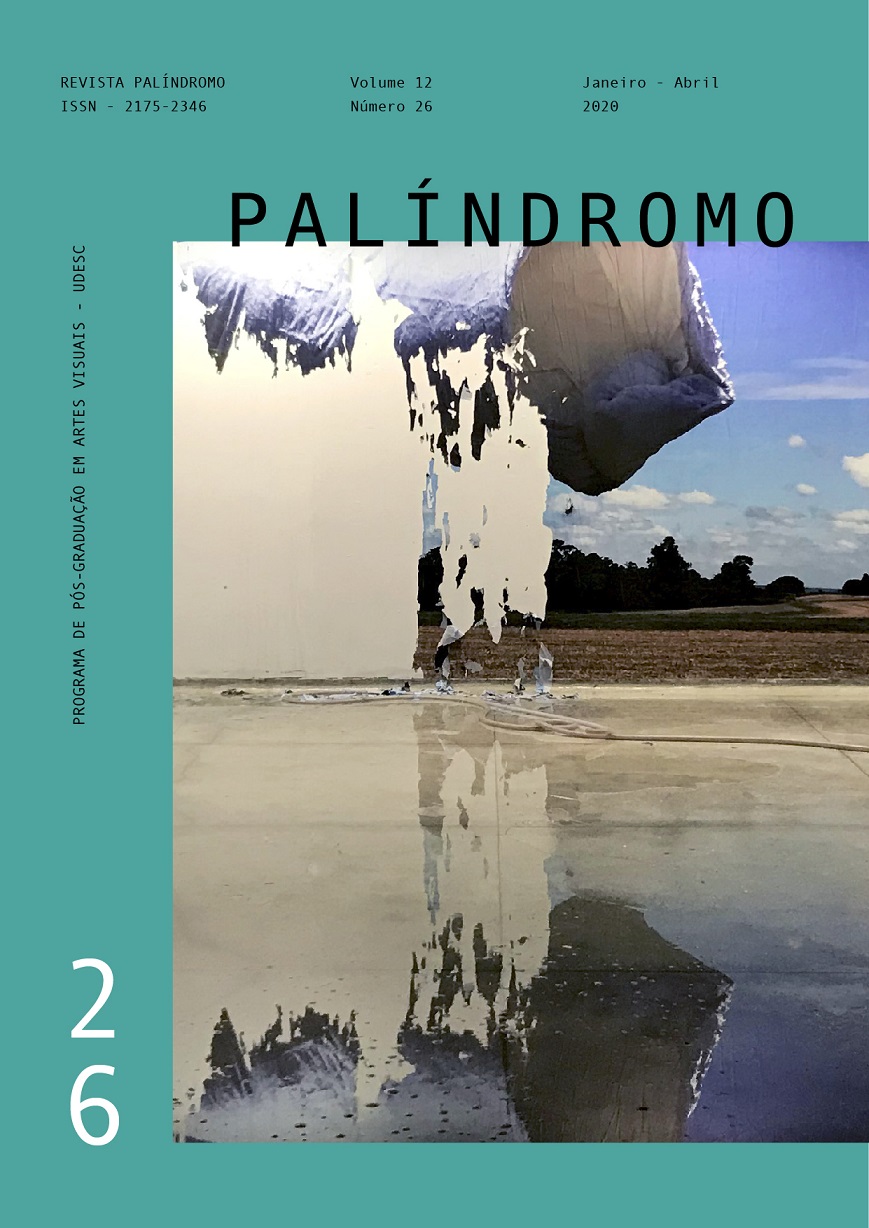Reflections about the activism dissolved on the context of Plante na Praça: colaborative garden in urban environment
DOI:
https://doi.org/10.5965/2175234612262020159Keywords:
site-specific art, collaborative art, urban art, activismAbstract
Plante na Praça is an artistic action of daily life. This project was liquid, fragmentary, collective, anonymous, finally modifying shared spaces. Because this action was built by various collaborators and has contributed continually to them, it enhances the collective and political action. Everyone involved work towards the same end, the common good of the square. The reflection about the activism of the action allowed approximations between the work of the artist and the ethnographer and also explore the concepts of Political Action and Freedom, by Arendt; Disagreement and Emancipation, by Rancière; becoming, by Deleuze and Guattari; Micropolitics by Guattari and Rolnik; The practice of everyday life and Antidiscipline, by Certeau.
Downloads
References
ARENDT, H. A condição humana (Trad. Roberto Raposo). Rio de Janeiro-RJ: Forense -Universitátia, 1987.
ARENDT, H. O que é política? Fragmentos das obras póstumas compilados por Ursula Ludz (Trad. Reinaldo Guarany). Rio de Janeiro-RJ: Bertrand Brasil, 1999.
CERTEAU, M. A invenção do cotidiano: 1. Artes de fazer. Petrópolis: Vozes, 2011.
DELEUZE, G.; GUATTARI, F. Mil platôs v.3 (Trad. Aurélio Guerra Neto, Ana Lúcia de Oliveira, Lúcia Cláudia Leão e Suely Rolnik). São Paulo-SP: Editora 34, 2012.
FOSTER, H. O retorno do real: a vanguarda do final do século XX. São Paulo-SP: Co-sac Naify, 2014.
FREIRE, C. Contexturas: Sobre artistas e/ou antropólogos. In: LAGNADO, L. e PEDRO-SA, A. (Orgs.) 27ª Bienal Internacional de São Paulo / Como viver junto. (Catálogo) São Paulo – SP: Fundação Bienal, 2006.
GUATTARI, F; ROLNIK, S. Micropolítica: cartografias do desejo. Petrópolis - RJ: Vozes, 2008.
GUATTARI, F. Revolução Molecular: pulsações políticas do desejo. São Paulo - SP: Brasiliense, 1985.
HUCHET, S. A elasticidade da arte para com a política: breves bases críticas. In: GE-RALDO, S. G. (Org.). Trânsitos entre a arte e a política. Rio de Janeiro – RJ: Quartet: FAPERJ, 2012.
KOHN, C. A ideia de liberdade como práxis política na “teoria da ação comunicativa” de Hannah Arendt. In: BREA, G.; NASCIMENTO, P.; MILOVIC, M. (Orgs.). Filosofia ou política? Diálogos com Hannah Arendt. São Paulo-SP: Annablume, 2010.
LEITE, R. P. Contra-usos e espaço público: notas sobre a construção social dos luga-res na Manguetown. In: Revista brasileira de ciências sociais, vol. 17, nº 49, Brasil, ju-nho 2002. Disponível em: <http://naui.ufsc.br/files/2010/09/Proen%C3%A7a_Con-tra-usos-e-espa%C3%A7o-p%C3%BAblico.pdf>. Acesso em: 19 jan. 2016.
RANCIÈRE, J. O espectador emancipado (Trad. de Ivone C. Benedetti). São Paulo - SP: WMF Martins Fontes, 2012.
RAVEN, P. H.; EVERT, R. F.; EICHHORN, S. E. Biologia Vegetal. Rio de Janeiro: Guana-bara Koogan. 8ª ed., 2014.
SZANIECKI, B. Experiências estéticas do comum. . In: GERALDO, S. G. (Org.). Trânsitos entre a arte e a política. Rio de Janeiro – RJ: Quartet: FAPERJ, 2012.
ZOURABICHVILI, F. O vocabulário de Deleuze (Trad. André Telles). Campinas-SP: IF-CH-Unicamp, 2004.
Downloads
Published
How to Cite
Issue
Section
License
Copyright (c) 2020 Palíndromo

This work is licensed under a Creative Commons Attribution 4.0 International License.
COPYRIGHT STATEMENT
The articles published by the magazine are free to use, intended for academic and non-commercial applications. Copyright is all assigned to the magazine. The articles whose authors are identified represent the expression from the point of view of their authors and not the official position of Palíndromo Magazine. The author (s) commits to whenever they publish material referring to the article published in Palíndromo mention this publication as follows:
This article was originally published by Palíndromo magazine in its volume (place the volume), number (place the number) in the year of (place the year) and can be accessed at: http://www.revistas.udesc.br/index.php/palindromo


